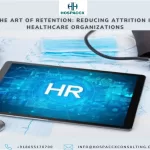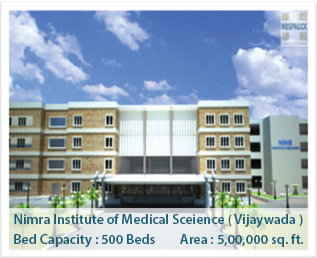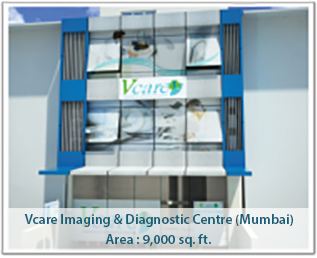INTRODUCTION
Hospital procedure costing is the process of identifying the inputs used in a hospital and applying the costs of those inputs to the delivery of care i.e. the outputs. This is not a simple process and requires expertise in identifying inputs and outputs, guidance for allocating the costs, and considerable complex numerical processing.
Considering the above facts, Hospaccx team participates in costing procedures for hospitals. This is macroficial study of Costing Procedure for Hospitals if you want to get into more detail you can contact info@hhbc.in
THERE ARE TWO MAJOR COSTING TO CONSIDER
1. Costing Methods– this identifies and describes several sources of expenditure data that are available, the different types of costs (direct, indirect and full cost) that can be included in calculating the total cost of services, and two general approaches to costing health care services (Micro-costing (bottom-up) and Standard costing (Top Down).
- Micro-Costing (Bottom-Up)
This approach identify and specify all of the resources that are used by individual patients. This type of costing requires detailed knowledge of the treatment and services provided to individual patients. All of the actual costs of the individual’s treatment and services are assigned to that one case. For example, calculating the micro-costs for an intensive care unit (ICU) stay requires identifying money values for drugs and supplies used in treating the patient, identification and calculation of the nursing costs involved, cost of physician services provided, cost of equipment, and any other costs that can be contributed to the individual ICU stay.
- Standard Costing (Top Down)
This approach is commonly referred to as “average” costing because the method takes total health care expenditures and divides it by a measure of total services provided (the output) to determine a cost per patient.
A simple formula illustrates this method:
Average cost = total expenditure ÷ total output
For example, if a hospital spends Rs.2,000,000 treating all patients and 2,000 patients are treated, then the average cost per case is Rs.1,000
2. Costing Methods for Specific Health Services– this describes the research methods applied to costing specific health care services. Costing methods are described for the following specific health services:
- hospital services;
- physician services;
- Home Care services;
- Personal Care Home (PCH) services; and
- Pharmaceutical / prescription drugs.
- Costing Hospital Services
Hospital services include both inpatient and hospital day procedure (day surgery) cases.
- Costing Physician Services
Physician cost information is collected from hospital records. However, not all physician services are recorded in this database. For example, not all physicians are paid on a fee-for-service basis. Some physicians are paid by salary, session rate, or contract.
- Costing Home Care Services
The Home Care data in the hospital record contains a record of each person receiving home care. This database contains information on the number of days a person had an open file (i.e.: was an active home care case), but does not contain information about the specific services a person received while receiving home care services.
- Costing Personal Care Home (PCH) Services
The Long Term Care (LTC) Utilization History Database in the hospital record contains service information for LTC/Personal Care Home (PCH) utilization in the area.
- Costing Pharmaceuticals/Prescription Drugs
The Drug Information Data in the hospital record contains information on pharmaceutical/prescription drug utilization.
EXAMPLE OF PROCEDURE COSTING
Costing of surgical procedures
- The staff time required for each procedure started with the time it takes the ground-level staff to clean the theatre and accessories, as well as preparing the theatre for the procedure.
- Ground-level staff bring the patient to the operating theatre; nurses and anaesthetists then prepare the patient for the surgery and perform related activities during the procedure.
- Doctors perform the procedure.
- Finally, the ground-level staff take the patient out of the theatre.
- Several common pieces of equipment, such as trolley and suction apparatus, are used in all procedures; hence, to determine the equipment cost, first list the equipment required for each procedure and then noted the time of usage of each piece.
- It should be mentioned in this context that for the staff time and equipment usage time in each procedure, average time was considered.
- The time spent by each member of the surgery team and the usage time of all equipment for each procedure were determined from interviews with the doctors and theatre nurses.
- The drugs and materials used was based on the actual usage for a particular procedure.
- Every such item used by the operating team was identified, including drugs for anaesthesia and all medical supplies, such as gloves, masks, caps, syringes, catgut, vicryl and cotton rolls.
- The corresponding unit prices of all drugs and materials were also collected. Some hospitals have a specific list of drugs and medical supplies for each procedure; use those lists in calculating the materials cost of each procedure.
- For hospitals that did not maintain such lists, ask the anaesthetists and theatre nurses about the drugs and medical supplies they used.
- For some shared materials such as cleaning solutions, which are used for all procedures, the nurses reported the approximate fraction they used for individual procedure and the cost can be calculated accordingly.
- Each procedure consumed a fraction of the total overhead cost of the operating theatre; thus, calculate the overhead cost for each procedure by using the proportion of time taken by that procedure.
BENEFITS OF PROCEDURE COSTING
- Procedure costing is useful or found to be most suitable for hospitals engaged in continuous care of patients.
- The distinctive feature of procedure costing is that the unit costs of medical services are determined for the respective patient.
- Allocation of expenses can be easily made and the costs in each procedure accurately determined.
- The performance analysis and managerial control is facilitated to a greater extent because of the availability of cost data in the form of prompt and accurate cost reports.
LIMITATION OF PROCEDURE COSTING FOR HOSPITALS
- Procedure costing is based on historical cost. The available cost information may not be useful for future managerial decision-making.
- Lack of uniformity: Procedures of cost accounting followed by different healthcare organizations are different for different services. There is no uniformity. This leads to different cost results for the same service.
- Many conventions: There are many conventions for classification of costs, pricing of services, apportionment of indirect costs, adoption of marginal or standard cost, etc. These create difficulty in determining the exact cost, because no one type of cost is suitable for all. Purposes and in all circumstances.
- Does not include all items of expense and income: Items of purely financial nature such as interest, financial charges, discount and loss on issue of shares and debentures, etc. are not taken into consideration in Procedure Costing.
CONCLUSION
Accurate procedure costing is critical to improve efficiency, in decision making and transparency in the hospital setting. Though it is difficult for healthcare organizations to strategically manage their operations without credible and detailed cost data. Hence, it is crucial to maintain cost data in-order to calculate procedure costing which would further help in maintaining the efficiency and transparency in hospital.
Do you want to a procedure costing for your healthcare organisation?
We can help you to improve efficiency and get transparency in your healthcare organisation, from inventory management to equipment planning and maintenance, HR management, business development promotions, TPA Management and management of all other facilities. Operation of all medical and non-medical functions related to the Patient-oriented, value-based activities which are essential for healthcare to run successfully.
It is the superficial and macro level study for more details kindly contact Hospaccx Healthcare business consulting Pvt. ltd on hospaccx.india@gmail.com Or you can visit our website on hospaccxconsulting.com
Related Team Members
Related Services
Other Industries
Related Blog
Related Success Stories










